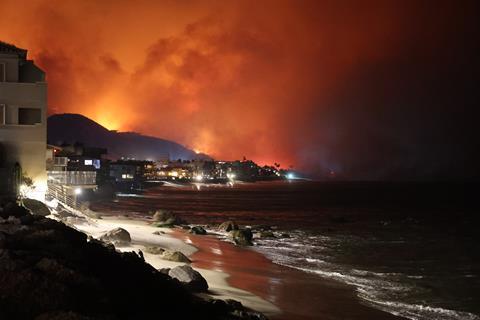Aon’s latest catastrophe recap shows US events accounted for 88% of global insured losses in the first nine months of 2025, as total natural disaster losses reached $203bn
Aon has reported a downturn in natural disaster activity during the third quarter of 2025, with global insured losses of at least $114bn and economic losses of $203bn for the year to date.

The re/insurance broker’s Global Catastrophe Recap for Q3 found that while the period did not produce major global events in loss terms, it still brought deadly earthquakes and extreme heatwaves across several regions.
From July to September, catastrophe-related losses were below average globally, but the human toll remained significant.
Aon reported that global reinsurance capital reached a record $735bn at mid-year 2025, with alternative capital rising to $121bn and outstanding catastrophe bond volume climbing almost 20% year-on-year to $54bn.
For Q3 alone, global economic losses were estimated at $34bn and insured losses at $12bn — both around three-quarters below their 21st-century averages and the lowest quarterly totals since 2006.
Around 18,000 people lost their lives in natural disasters in the first nine months of the year, mainly from earthquakes and heatwaves.
The deadliest single cat event has been a 31 August earthquake in Afghanistan.
Despite these tragedies, the global death toll from disasters was 66% below the 21st-century average.
Aon recorded 36 catastrophe events that each caused more than $1bn in economic losses, 22 of which also exceeded $1bn in insured losses.
The data indicated a global protection gap of 44%, the lowest ever recorded for this period, largely due to the dominance of the US market, which accounted for 88% of insured losses.
Severe convective storms were the costliest peril, generating $57bn in insured losses globally — the third-highest total on record for this type of event over nine months.
The Palisades Fire in California (pictured) in January was identified as the costliest single event, resulting in $32bn in economic losses and $23bn in insured losses.
Wildfire losses overall surpassed $60bn in economic terms and $40bn in insured costs.
Michal Lorinc, head of catastrophe insight at Aon, said the shrinking protection gap showed insurance’s growing role in recovery efforts.
“The record-low protection gap observed in the first nine months of 2025 highlights the growing role of insurance in helping communities recover from natural disasters,” Lorinc said.
“While this progress has been driven largely by high insurance penetration in the US, it underscores the opportunity to expand similar levels of protection globally.”
He added this would require “continued investment in region- and peril-specific tools” and stronger collaboration between capital providers, governments and insurers.










No comments yet